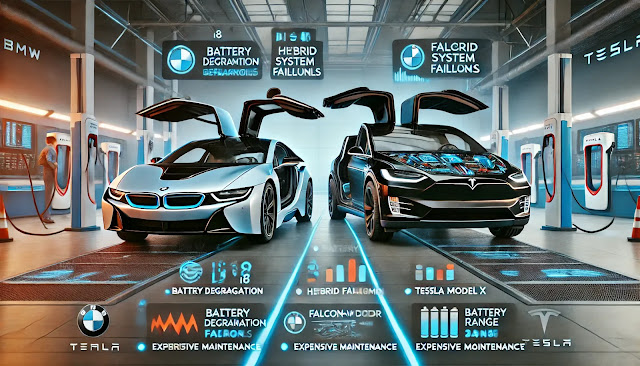BYD Seal Lion 7: A Deep Dive into its Cutting-Edge Battery Technology and Charging Capabilities
In a competitive electric vehicle (EV) landscape, the BYD Seal Lion 7 sets itself apart with its innovative technologies, including the revolutionary Blade Battery, fast charging capabilities, and Vehicle-to-Load (V2L) functionality. This article delves into these advanced features, highlighting their importance to the U.S. market and how they enhance the driving experience.
The Revolutionary Blade Battery
Chemistry and Structure of the Blade Battery
The Blade Battery uses lithium iron phosphate (LFP) chemistry, which boasts a safer and more stable structure compared to nickel manganese cobalt (NMC) batteries. LFP batteries are less prone to thermal runaway, thanks to their strong chemical bonds and lower energy density at the cell level. BYD's breakthrough lies in its design, which optimizes the cell-to-pack architecture to increase the pack-level energy density, addressing one of the common drawbacks of LFP chemistry.
Safety and Testing
The Blade Battery has passed rigorous safety evaluations, including the nail penetration test. Unlike traditional batteries that might overheat or catch fire under extreme conditions, the Blade Battery maintains its integrity, making it one of the safest EV battery options available.
Advantages for the Seal Lion 7
Durability: Long lifespan and consistent performance over time.
Compact Design: Increased cabin space due to the battery’s efficient form factor.
Sustainability: Eco-friendly and recyclable materials.
Fast Charging Capabilities
Charging Standards and Speed
The BYD Seal Lion 7 supports the CCS (Combined Charging System) standard, widely used in the U.S. Charging the Blade Battery from 10% to 80% takes about 24 minutes under optimal conditions, such as a battery temperature of 25°C. However, real-world conditions like extreme weather or battery state may affect performance.
Comparative Analysis
When measured against the Tesla Model Y and Kia EV6:
Tesla Model Y charges at speeds up to 250 kW but tapers charging speeds after 50% state-of-charge (SoC).
The Kia EV6 supports up to 350kW but has faster charging only on an 800V architecture. The BYD Seal Lion 7, while not 800V, provides consistent performance on its 400V system.
Infrastructure in the U.S.
The Seal Lion 7 integrates seamlessly with the growing U.S. charging network, including Electrify America and other CCS-compatible providers. This ensures convenience for long-distance travel, reducing “range anxiety.”
Vehicle-to-Load (V2L) Technology
Power Output and Applications
The Seal Lion 7’s V2L capability delivers up to 3.5kW of power, sufficient to charge laptops, power lights, or even run household appliances like microwaves or refrigerators during outdoor activities or emergencies.
Comparisons to Competitors
The Hyundai Ioniq 5 offers a similar V2L feature with slightly higher output at 3.6kW.
Unlike many competitors, the Seal Lion 7 integrates this feature without the need for an additional external adapter, adding convenience.
Battery Management System (BMS)
The Seal Lion 7 features an advanced Battery Management System (BMS) designed to:
Optimize energy usage across varying driving conditions.
Monitor and maintain battery temperature for consistent performance.
Provide predictive maintenance alerts to enhance longevity.
This sophisticated system ensures that the Blade Battery delivers maximum efficiency and safety.
The Seal Lion 7 in the U.S. Market
Availability and Pricing
While official U.S. pricing for the Seal Lion 7 is yet to be announced, competitive pricing strategies will likely position it below $50,000 to attract mid-size SUV buyers. Consumers can expect a standard warranty of 8 years or 100,000 miles on the battery.
Addressing Consumer Concerns
To appeal to US drivers, BYD plans to establish robust service networks and ensure easy access to spare parts. This effort aims to alleviate concerns about long-term reliability.

%20chemistry%20and%20cell-to-pack%20architecture.%20Th.webp)

%20system%20in%20use.%20The%20car%20is%20parked%20outdoors,%20powering%20a%20camping%20setup%20with%20string%20lights.webp)




Comments
Post a Comment